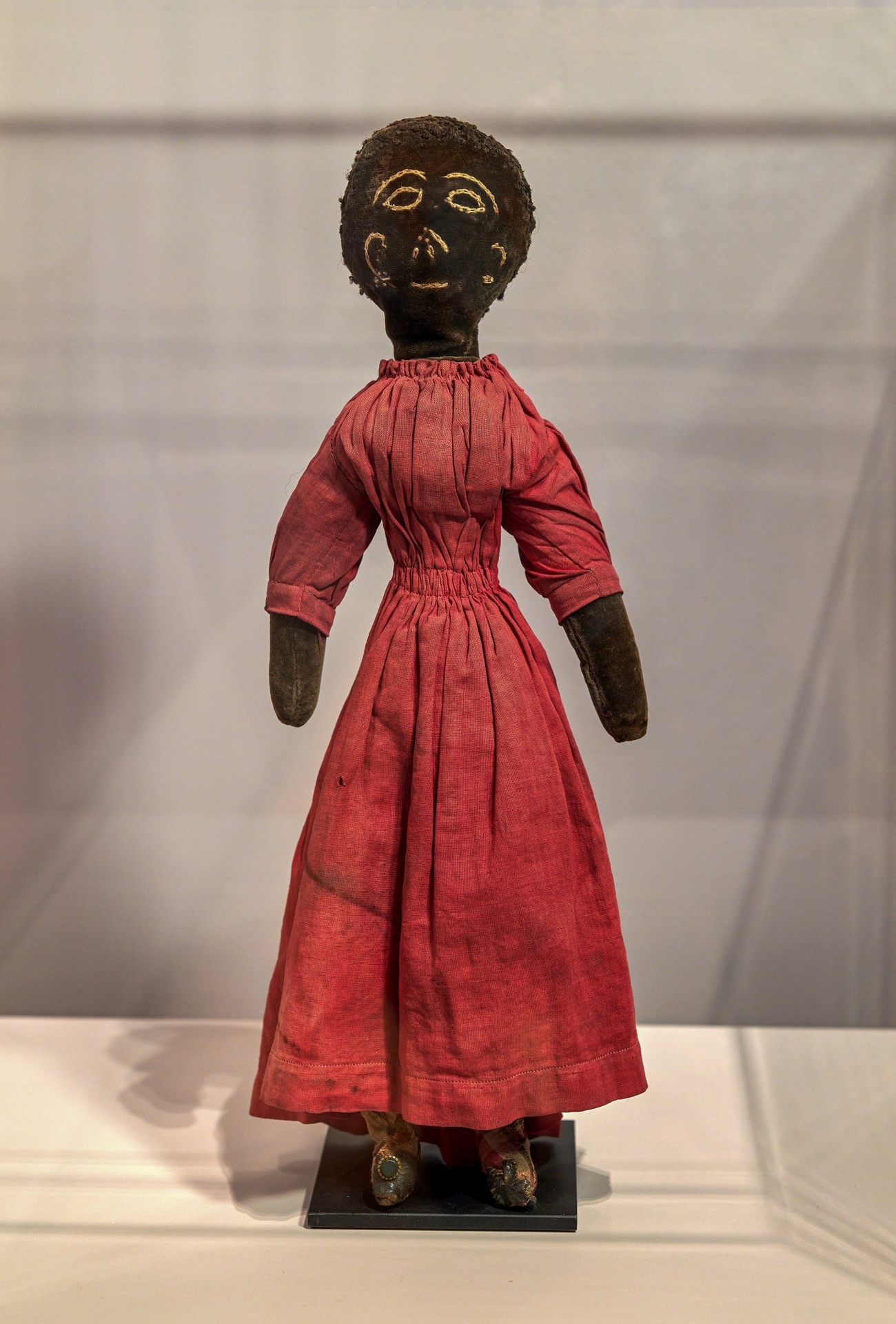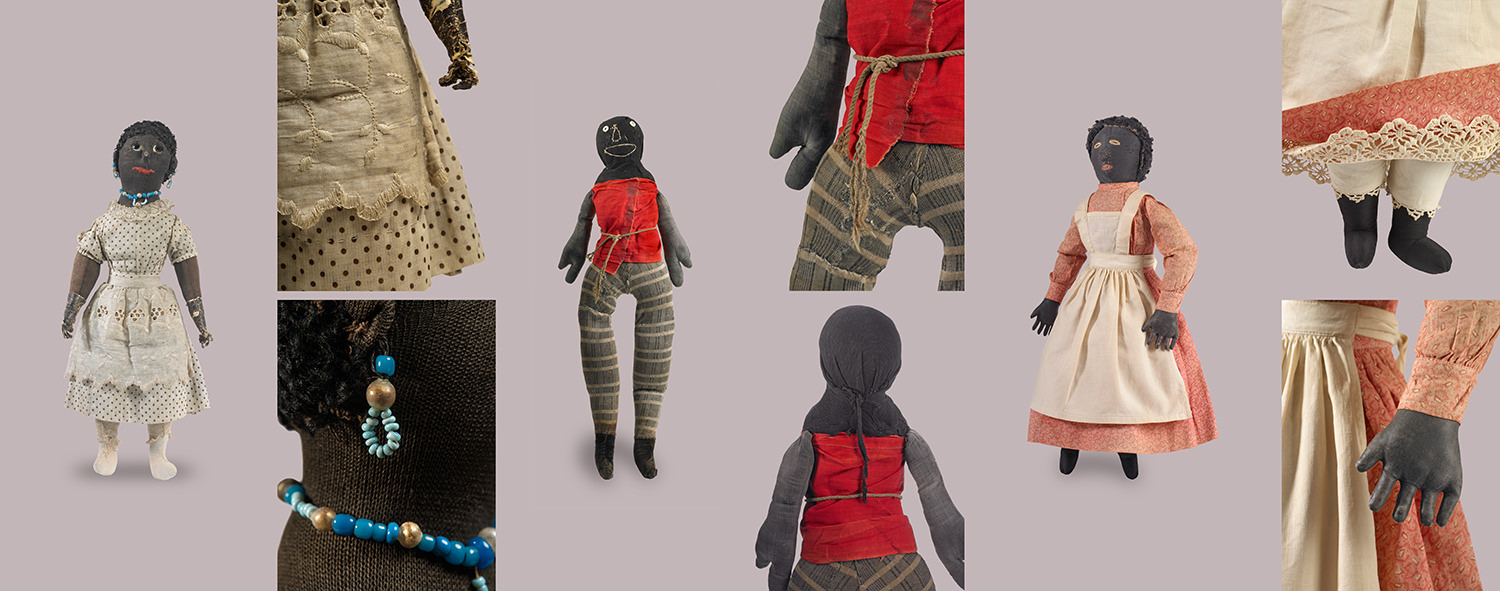




Expressions
of resilience and creativity, perseverance and pride, love and longing: The handmade Black dolls that populate
this exhibition have a lot to say. Stitched largely by Black women for their
own children or white youngsters under their care, the dolls were ingeniously
crafted from materials at hand. Their faded clothing, torn bodies, and sundry
repairs evoke vigorous play and lost conversations, and call up images of the
children that cuddled, pampered, and mistreated them.
Made in the U.S. between the 1850s and the 1940s,
these dolls span a tumultuous period in American history marked by slavery,
legalized segregation, and entrenched racism. These works are mute about their specific
histories, yet every stitch and swatch was a deliberate choice. The makers,
mostly unknown to us, created toys that expressed their inner lives and
intangible feelings while challenging pervasive stereotypes.
The dolls on display in this exhibition are from
the collection of Deborah Neff unless otherwise noted.
LEFT TO RIGHT:
Doll
in linen dress, US, 1900-05
Mixed
fabrics, leather, metal
Sock
doll with beaded necklace, US, early 20th century
Mixed
fabrics, beads, paint
Undressed
doll, US, late 19th/early 20th centuries
Mixed
fabrics
LEFT TO RIGHT:
Doll
in short dress, US, 1900-25
Mixed
fabrics
Doll
in plaid dress, US, late 19th century
Cotton,
leather, glass
Doll
with red shirt, US, possibly Iowa, ca. 1920-40
Mixed
fabrics, string, mother of pearl, paint
Doll
in blue dress, Eastern US or Canada, ca. 1865-70
Cotton,
paint

Doll
in red dress,
Rindge NH, late 19th century
Mixed
fabrics, wood, leather, glass, metal

Doll details wall: Ellen McDermott Photography